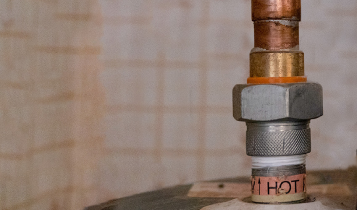How to Tell if the Anode Rod Is Bad in Your Water Heater
One often overlooked component of a water heater is its anode rod. This unsung hero protects it against corrosion to extend its lifespan, but its condition may worsen over time, requiring water heater repair. Mr. Rooter Plumbing explains how you can tell if the anode rod in your heater has become compromised and why immediate attention must be paid if an issue exists.
What Is an Anode Rod
Before delving into how to identify an anode rod that's been compromised in our water heater tank, let's establish exactly what an anode rod is and its significance in its composition and purpose. An anode rod consists of an extended metal rod composed typically of aluminum, magnesium, or zinc that sits inserted inside your water tank as an anode — its primary objective is attracting any corrosive elements in water to stop them from corroding against the inner walls and eventually attacking your inner tank's inner linings from corrosion!
Signs of a Bad Anode Rod
Over time, anode rods become vulnerable to corrosion, protecting your water heater tank against rusting and decay. Regular inspection and maintenance can extend its life significantly.
- Rust or Corrosion on the Rod: Rust and corrosion on an anode rod is often an obvious indicator that something is amiss with it, so to check, turn off your water heater and power source, then remove and inspect carefully your rod from its tank before reinstating - if extensive corrosion exists then replacing with new anodes might be in order.
- Reduced Hot Water Quality: An anode rod's degradation may lead to compromised water quality. If you notice discolored or rusty hot water when using hot water for showering or cooking purposes, this could indicate the anode is no longer protecting effectively and should no longer be consumed or cooked with. This water should never be used for drinking or eating purposes.
- Unusual Noises from Your Water Heater: Any odd sounds coming from your water heater, such as popping or crackling noises, could indicate excessive sediment build-up in its tank and failing anode rod, potentially leading to inefficient heating, damage or potential failure of its components.
- Leakage on Your Water Heater: It must be immediately addressed when discovering leakage around your water heater. A bad anode rod could corrode, and leakage could occur within hours; in such an instance, professional plumbing assistance would need to be sought immediately for repair work.
- Reduced Lifespan of Water Heaters: Premature water heater failure may result from neglectful maintenance on anode rod condition, making regular inspections and replacements invaluable in prolonging its useful life, potentially saving the cost associated with premature replacement costs.
How to Check and Replace an Anode Rod
Checking and replacing an anode rod regularly to extend its longevity is one of the key tasks necessary to maintaining your water heater's efficiency and lifespan. Here is a step-by-step guide on how to do it:
- Turn Off the Water Heater: Before beginning any work on your water heater, turn off its electrical (gas or electric) supply and water (electric or otherwise). Give any hot water time to dissipate before continuing.
- Find an Anode Rod: Generally located near the top of a water heater tank, an anode rod may be reached via either its own port or through hot water outlets.
- Drain Off A Small Amount Of Water From Your Tank To Ease Removal: To simplify removal, consider draining some water out of the tank to relieve pressure and ease removal. This step may allow easier access.
- Examine the Rod: Carefully remove your anode rod with a wrench or socket set and inspect for signs of corrosion or extensive wear, such as thick spots. If heavily corroded areas exceed half an inch in thickness or heavy corrosion is evident, replacement might be needed.
- Replace An Anode Rod: When replacing the anode rod in your tank, purchase one made from a similar material and size as its previous version and apply the plumber's tape over its threads before inserting it back securely; avoid overtightening as this could damage its threads.
- Return Your Water Heater to Service: Once the new anode rod has been fitted securely in its place, switch on your water heater again to allow it to bring water up to its ideal temperature.
- Plan Regular Maintenance: Note when and why the anode rod was replaced, then plan a periodic check depending on water quality and condition to check again between 2-5 years later.
Mr. Rooter Plumbing
We focus on delivering top-tier plumbing service that exceeds expectations and meets all your plumbing needs. Our highly qualified plumbing service is responsible for everything from routine maintenance and repairs to complex installations - no matter the scale.

